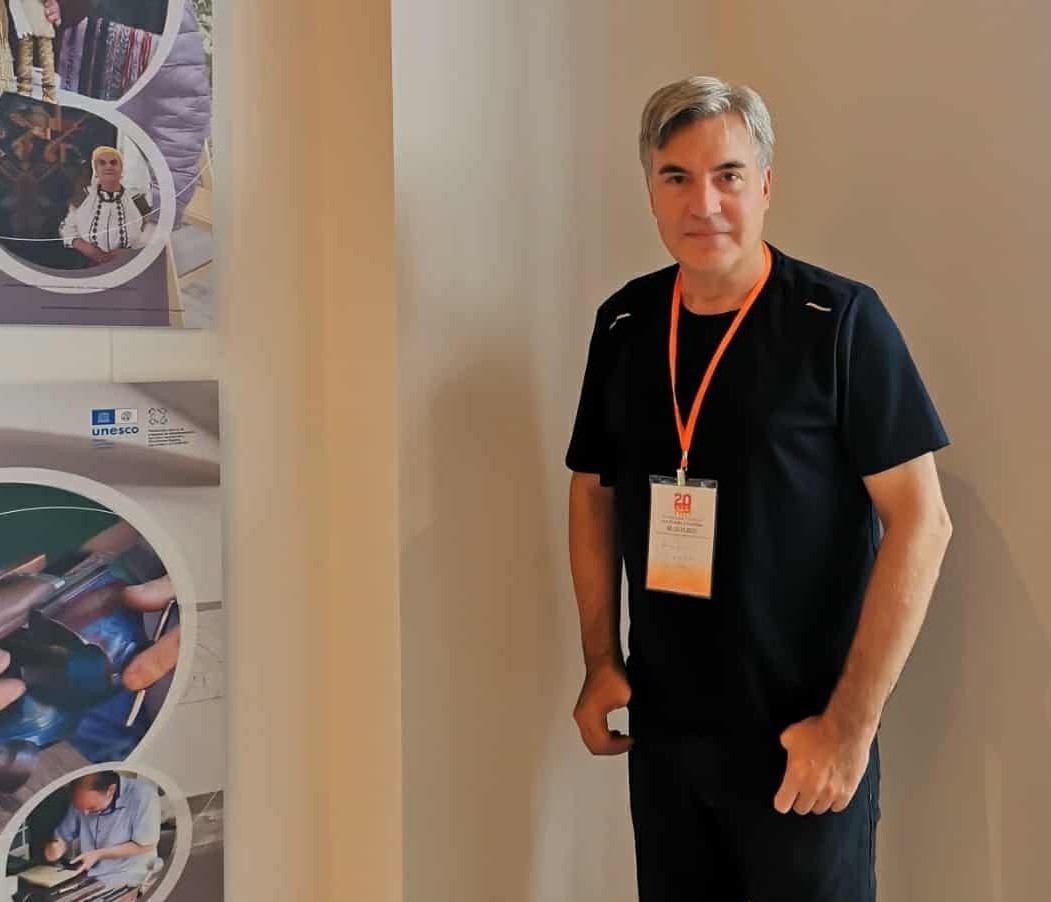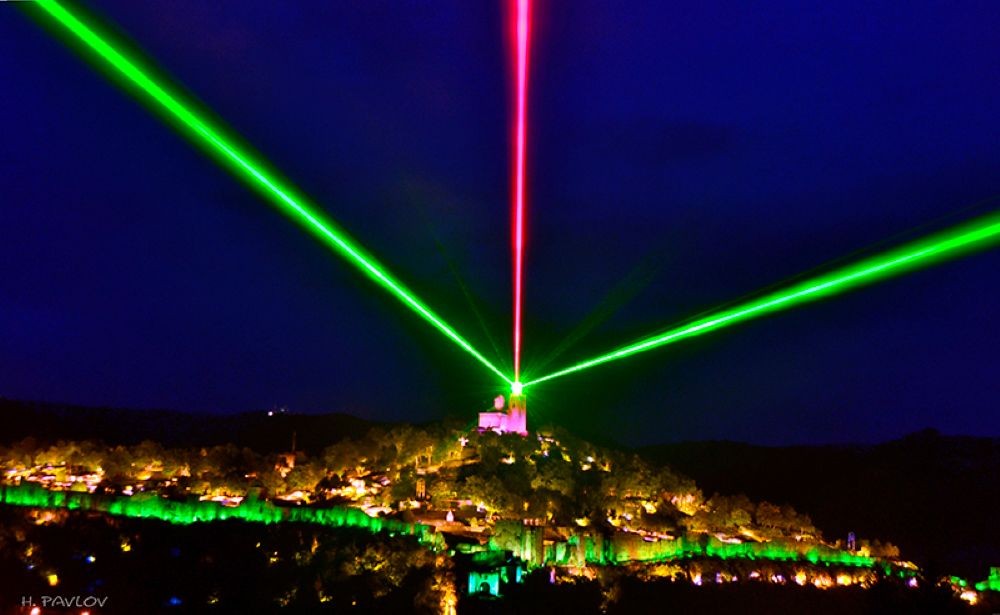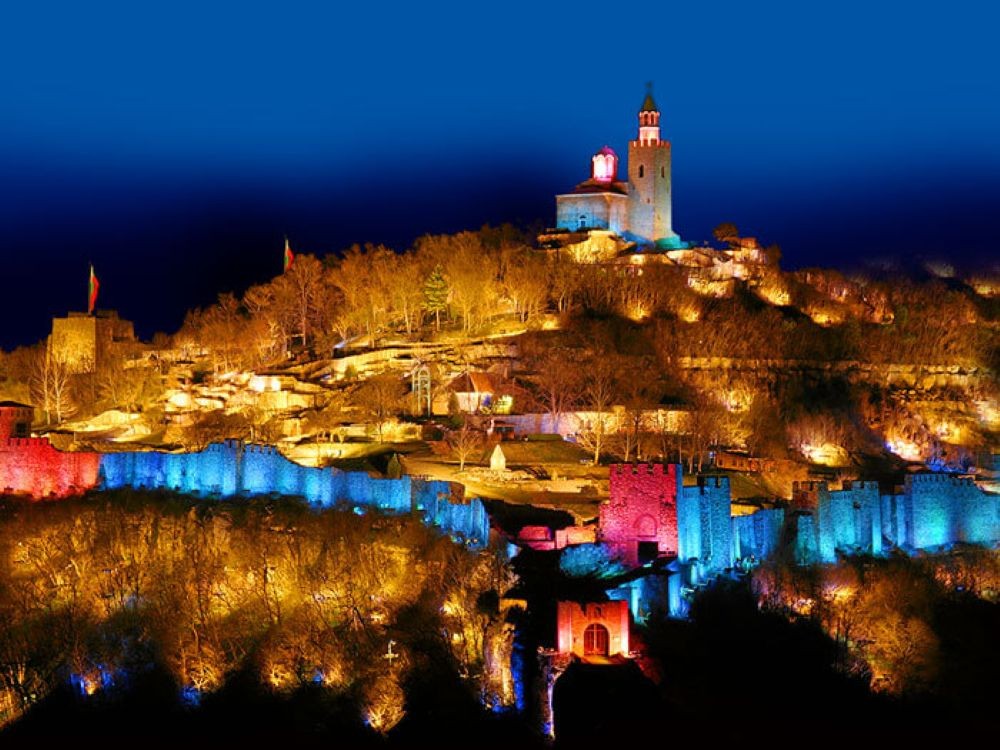The first Sound and Light multimedia show took place at Tsarevets fortress in Veliko Tarnovo in 1985. The occasion – the 800th anniversary of the uprising by Peter and Asen that led to the restoration of Bulgarian statehood after two centuries of Byzantine rule. 2025 marks 40 years since that first thrilling outdoor audio visual show which traces the centuries long history of Bulgaria and which has come to be regarded as a symbol of Bulgaria’s old capital – Veliko Tarnovo.
What is the show’s story?
“The idea came into being in the 1960s and it is not original – at the time there already existed similar shows in Egypt, and closer at hand as well – in Greece, though that show was terminated,” Rumen Kolev, member of the technical team behind the show against the backdrop of the Medieval Bulgarian fortress says in an interview with Radio Bulgaria.

“Since 1965, when a nationwide committee for the development of Veliko Tarnovo was set up, specific steps were taken for such a show in this country as well. At one point a competition was organized for script, with three entries shortlisted – one was by writer and publicist Serafim Severnyak, the second – by author of historical novels Anton Donchev and the third – by film director and screenwriter Vulo Radev. Unlike the other two, Vulo Radev’s proposition included no text, no actors, and that made it so much easier to present to an audience that included foreigners.”
That is why this was the option chosen, but by this time you are probably asking yourselves – whose is the dramatic music used in the light show?
There are two answers to this question, Rumen Kolev says:
“When the show was first shown in 1985, the music was by composer Simeon Pironkov. It was a short composition – the whole show was under 8 minutes. It was used until the end of 1987 and in the spring of 1988 the final version was ready which is shown to this day. Its composer is Jiri Stivin. In his composition he has included many traditional Bulgarian melodies like the songs Ot koga se e, mila moya mayno lyo (a song dedicated to the heroism of Tsar Ivan Shishman – the last Bulgarian ruler before the country fell under Ottoman rule – editorial note), Stani, stani yunak balkanski (written by poet Dobri Chintulov in the 1840s urging Bulgarians to wake up and fight for their freedom – editorial note). The show ends with Na mnogaya Leta (a church Slavonic chant and a blessing for a long life – editorial note). The recordings were made in Prague.”

As you can imagine, any endeavor on such a scale has a technical team whose work is invaluable because of the specifics of the project and the surrounding terrain.
“2,400 colour spotlights had to be assembled on the hill, alongside 1,400 flashes, a laser beam system as well as 6 bells. All the cables needed were underground – 630 kilometres of them in total. These cables had to be laid underground, but this was an archaeological site which ruled out the use of any mechanized machinery whatsoever, so everything had to be done by hand, using pickaxes. They were used to hack deep grooves into the rock inside which metal pipes were laid inside which were the cables.”
When the experts came from Czechoslovakia who were supposed to construct the low-voltage control module for the show, they expected to see some castle lit up. What they did see, however, was a huge fortress with a wall that was 1,600 metres long. And it was immediately clear that the initial idea for the show to be ready for the 1300th anniversary of the founding of the Bulgarian state in 1981 was absolutely unfeasible. And so the work went on until the autumn of 1985.

Nowadays, Sound and Light is an impressive attraction that can be seen in any season. Throughout the year there are some 30 free shows on various occasions – the city’s patron saint’s day, national and official holidays. Besides that, 100 to 200 audio-visual shows are commissioned by tourist groups, organizations or individuals every year. The paid shows can be observed from a special hall with a panoramic terrace behind the Nativity of the Blessed Virgin Mary cathedral in Veliko Tarnovo.
Translated and posted by Milena Daynova
Photos: soundandlight.bg, tsarevets.eu, Yoan Kolev, veliko-tarnovo.bg
On 12 November at 5:30 p.m., Cardinal Pierbattista Pizzaballa, Latin Patriarch of Jerusalem, will give a lecture in the Marin Drinov Hall of the Bulgarian Academy of Sciences, at the invitation of the corresponding member of the Pontifical Committee for..
To mark the 65th anniversary of the Cuban animation studio Instituto Cubano del Arte e Industria Cinematográficos (ICAIC), Bulgarian director Andrey Hadjivasilev conducted a film workshop with students in Havana, the Bulgarian Embassy in Havana..
On this day five years ago (in 2020), a memorial plaque dedicated to the world-renowned Bulgarian bass Nicolai Ghiaurov (1929–2004) was unveiled in Modena. It was in this Italian city that the celebrated opera singer lived and worked from 1981 until his..
Theater enthusiasts in Bulgaria are already counting the hours until start of the 13th edition of Theaters Night. This exciting evening will turn the..
Bulgarian artist and architect Vivia Niki presented her new land art creation—a giant three-dimensional candle painted on a meadow in the forests of the..

+359 2 9336 661
